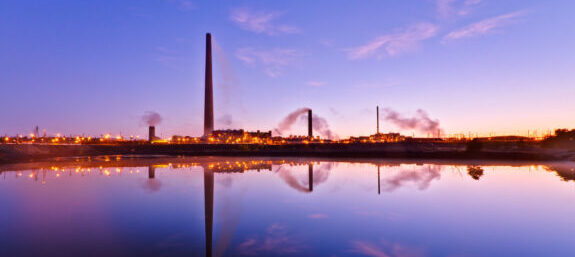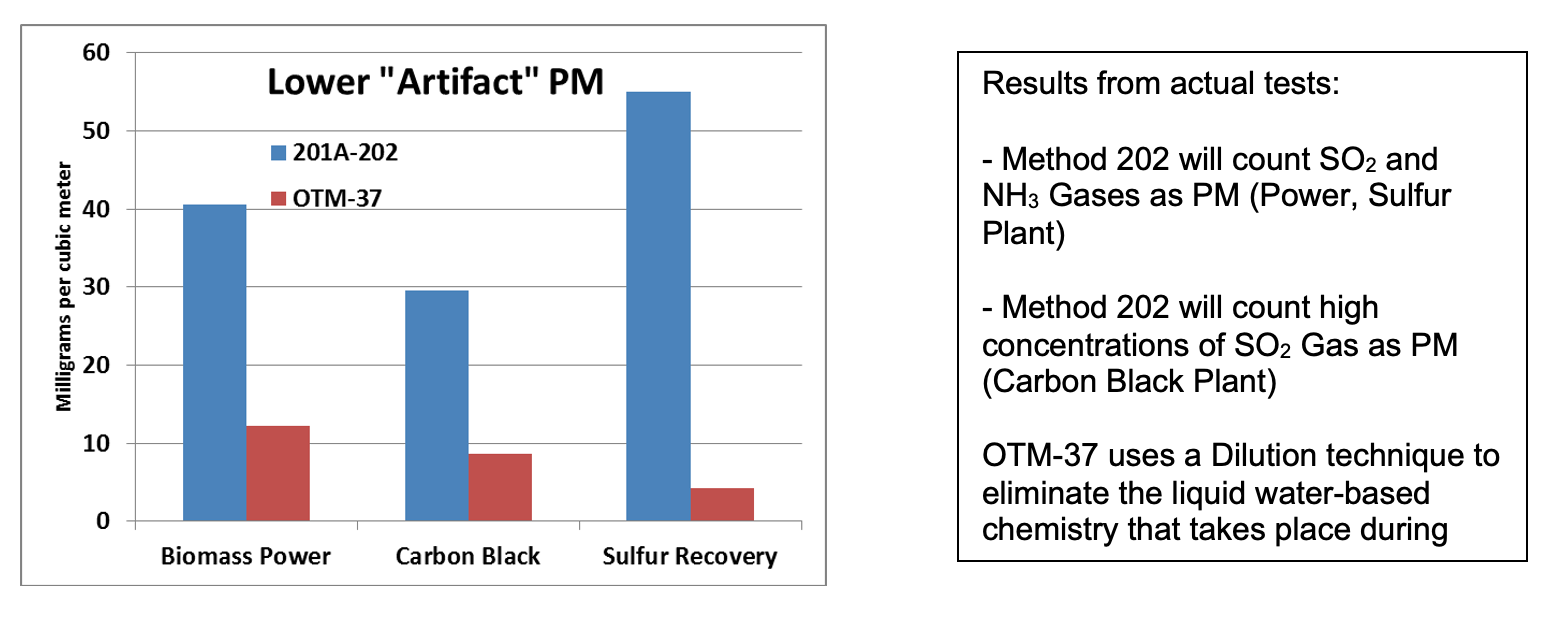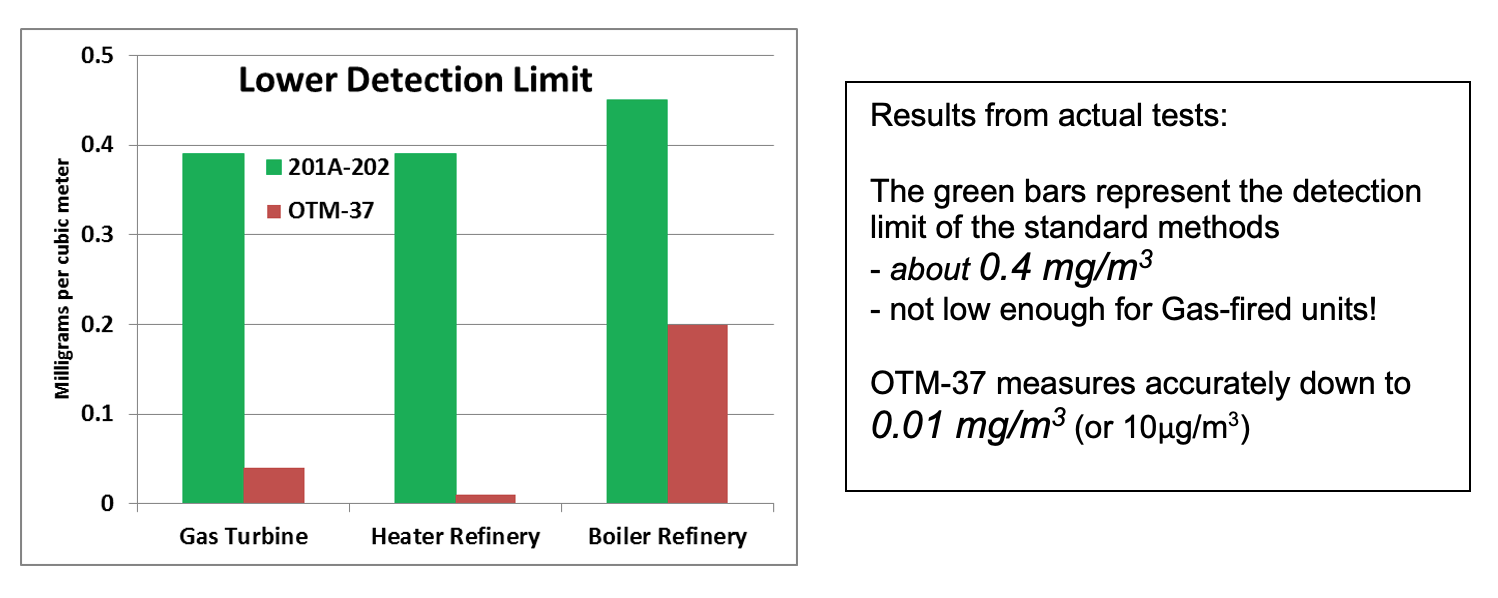
The Benefits of OTM37 vs. Standard Stack Method Testing
December 6, 2021
By: Kevin Crosby
One stack testing method we recommend to our customers compared to standard stack testing is OTM-37. This dilution tunnel technique is much more sensitive for measuring low-concertation sources and can provide an actual emission measurement. Additionally, the cost of running OTM37 is much lower than purchasing credits, the data is reliable and accurate, and the reports show that a facility’s emissions will be much lower.
Let’s see how the OTM-37 method compares to standard stack testing.
Solution for PM2.5 Test Results Solution for PM2.5 Test Results
The EPA’s Test Method 37 (OTM-37) can solve emission measurement problems:
- The standard test methods (5-202 or 201A-202) collect SO2 and NH3 and count them as “Condensable Particulate Matter” because of liquid water-based chemistry.
- OTM-37 uses dilution with dry air in place of water condensation to provide more representative results in direct comparisons of methods:

Real Emissions lower than the standard methods can detect?
- OTM-37 measures low enough to quantify the actual Particulate Matter emissions from Gas-fired sources – far below the standard methods’ detection limits.

Our experts are dedicated to investigating and promoting the newest measurement technologies, such as OTM-37, keeping our customers and us on the cutting edge of environmental testing and monitoring. The services and data provided are more sensitive, selective, and delivered to ensure we meet our customer’s unique data quality objectives.
Additionally, we have conducted some of the most visible and essential testing programs in the country where regulatory and public scrutiny are at their highest. We can perform any source testing program and at any size or sophistication.
 Kevin Crosby
Kevin Crosby
Vice President, Technical for Montrose Air Quality Services, LLC, Stack Emission Testing
Kevin Crosby bring over 45 years of industry expertise to the Montrose team where he currently works as Vice President, Technical. Prior to this, he worked in various management and emission testing positions for companies such as The Avogardo Group and Carnot Techincal Services, Inc. Kevin is a member of the American Society of Mechanical Engineers, the Air & Waste Management Association, and the Source Evaluation Society where he was appointed to the Board of Directors. Being a subject matter expert, Kevin has published multiple peer reviewed articles about various industry related topics. Kevin holds a Bachelor’s Degree in Meteorology from San Jose State University.

